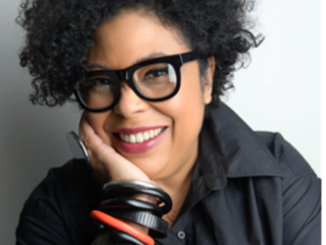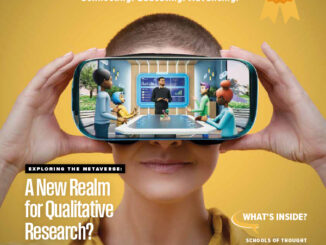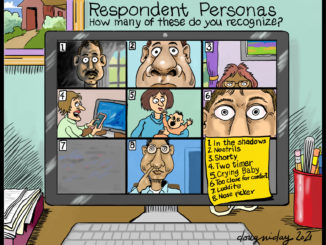by Brandale Mills Cox, PhD, Founder & Principal, Inclusive Market Research Group, Albuquerque, New Mexico, brandale@inclusivemarketresearchgroup.com
The events of 2020 are a time in history we will never forget. The pandemic, combined with the racial and social uprisings seen in many countries that summer, exacerbated issues impacting communities of color—and brought them to the surface.
People of color moved to the forefront, and their concerns were taken up by media outlets across the world. Addressing the concerns and needs of people of color became an urgent priority broadly—including for brands.
These unprecedented events ultimately changed how brands address and want to address diverse communities. Now, more than ever, there is a sense of urgency to better understand the experiences of individuals—from women, Black, Indigenous, and People of Color (BIPOC), and LGBTQ+ communities to help inform outreach strategies and create more inclusive products and services. Organizations are recognizing that they can no longer afford to ignore the demands of inclusion from communities of color.
Qualitative researchers have a unique opportunity to tell the stories of marginalized individuals. Traditionally, market researchers have helped bridge the gap between organizations and the communities they seek to understand. But today’s social and racial renaissance requires analysis that gets at the cultural nuances that may exist. Research methodology best practices often highlight the importance of making your participants comfortable during the data collection process to ensure a fruitful interaction with a respondent. But there has been less emphasis on the importance of researchers understanding the cultural or ethnic background of your participants to ultimately shape the insights you surface. That’s why your research team should be reflective of diverse cultures, experiences, and backgrounds to help ensure your data collection and analysis best practices are truly impactful for your clients.
For some established teams, this may seem like a daunting task, but diversifying does not have to be a complete overhaul of your existing team. Consider partnering with consultants who specialize in multicultural insights for specific projects that may require that expertise. Some simple steps for creating connections with potential research partners include:
- Develop partnerships with organizations such as Insights in Color (www.insightsincolor.com), a collective of multicultural researchers, by leveraging their network of experienced researchers who specialize in connecting with communities of color.
- Utilize online networking sites such LinkedIn and Greenbook to find research consultants who have a specific expertise in researching multicultural communities. Oftentimes, these specialties are highlighted in profile headlines, making it easy to identify potential partners.
- Leverage your existing network! Researchers tend to assume they know everyone within reach of their network, but you never know what resources are available outside of your existing connections within your network until you ask. Never underestimate your network’s reach.
Now that we’ve identified ways to diversify your research partners, here are a few benefits of having a diverse research team.
Diverse Teams Are Just Better for Business
According to the “Diversity Matters” (2019) report by McKinsey & Company, diverse teams have an increased financial performance, which also contributes to a more innovative environment and a greater exploration of ideas among team members. The other positive contributions that come from working with diverse partners offer new perspectives that could ultimately strengthen your client engagement. As qualitative researchers, creativity and different perspectives during the analysis phase contribute to a final product that clients will value and be able to apply to their overall business strategies.
While creative, diverse research teams are important in mitigating error in understanding insights from diverse audiences, it is also important to avoid tokenism and “check-box” representation on your team. Nurturing your team’s diversity and their differences are essential in helping your research team thrive, making it a win-win for both you and your clients.
Similar Cultural Backgrounds Lead to Authentic Interactions
If you’re seeking rich and comprehensive data from your research process, then your team and research partners should reflect the ethnic and cultural diversity of your research participants. While we know no one’s lived experience within a specific demographic is the same, the sense of community and understanding that is often established among people with similar demographics lends itself to creating a safe space for respondents to feel comfortable to respond freely and openly.
The comfort that comes from speaking to someone who looks like you, and who potentially has shared the same experiences as you, adds to the value of data collected in focus groups and interviews. It also allows cultural nuances to be identified during analysis, which may otherwise be missed by someone without a direct connection with the group. This connection established between the researcher and participant lends itself to a more engaging interaction, thus adding to your team’s ability to create more comprehensive findings and recommendations.
Data Analysis May Be Coded and Understood Differently
Not only is it important for your team and research partners to be diverse, it’s also important to value their diverse opinions and perspectives provided during the research process. Their firsthand experience and connection to diverse demographics could facilitate additional interpretations of rhetoric and scenarios not easily identifiable to those without personal context to the group.
Additionally, a data analyst familiar with colloquial terms within a specific community can not only understand those responses, but also recognize the implicit meaning behind the responses. It’s critical to have varying perspectives collecting and analyzing data to help your team avoid groupthink and other generalizations.
Diverse Perspectives Help Shape Methodological Approaches
Having various outlooks that help shape research approaches can also inform methodological strategies that highlight the strengths of diverse experiences. Certain approaches may render a more fruitful interaction, creating an ideal exchange between the researcher and participant. Research that neglects the cultural nuances in data collection and analysis can miss subtle variations that can lead to breakthrough findings for clients.
For example, a researcher familiar with nuances from a specific cultural and ethnic group can provide insight on the best strategies to approach data collection from these groups, especially if it is sensitive subject matter or identifies research themes that may be common knowledge within that demographic. Ultimately, the shared experience between researchers and participants from diverse backgrounds can lead to a more comprehensive understanding of the topic under evaluation.
It Shows Commitment to Truly Understand Diverse Communities
Nothing is worse than agreeing to contribute and share your experiences as a research participant as a member of a marginalized community only to find out the researcher lacks a basic understanding of factors that contribute to your lived experience. Not only does it create a disconnect between the researcher and participants, it also creates a barrier in collecting relevant insights that might benefit your client’s goal. By having a diverse research team, you have a greater opportunity to connect with your participants and illustrate that you understand the importance of creating safe spaces for communities of color.
As researchers, our goal is to help our clients deeply understand their customers and potential customers. With well-designed research and analysis that recognizes the “text” and subtext of all communities involved in research, you can bring their voices forward.




